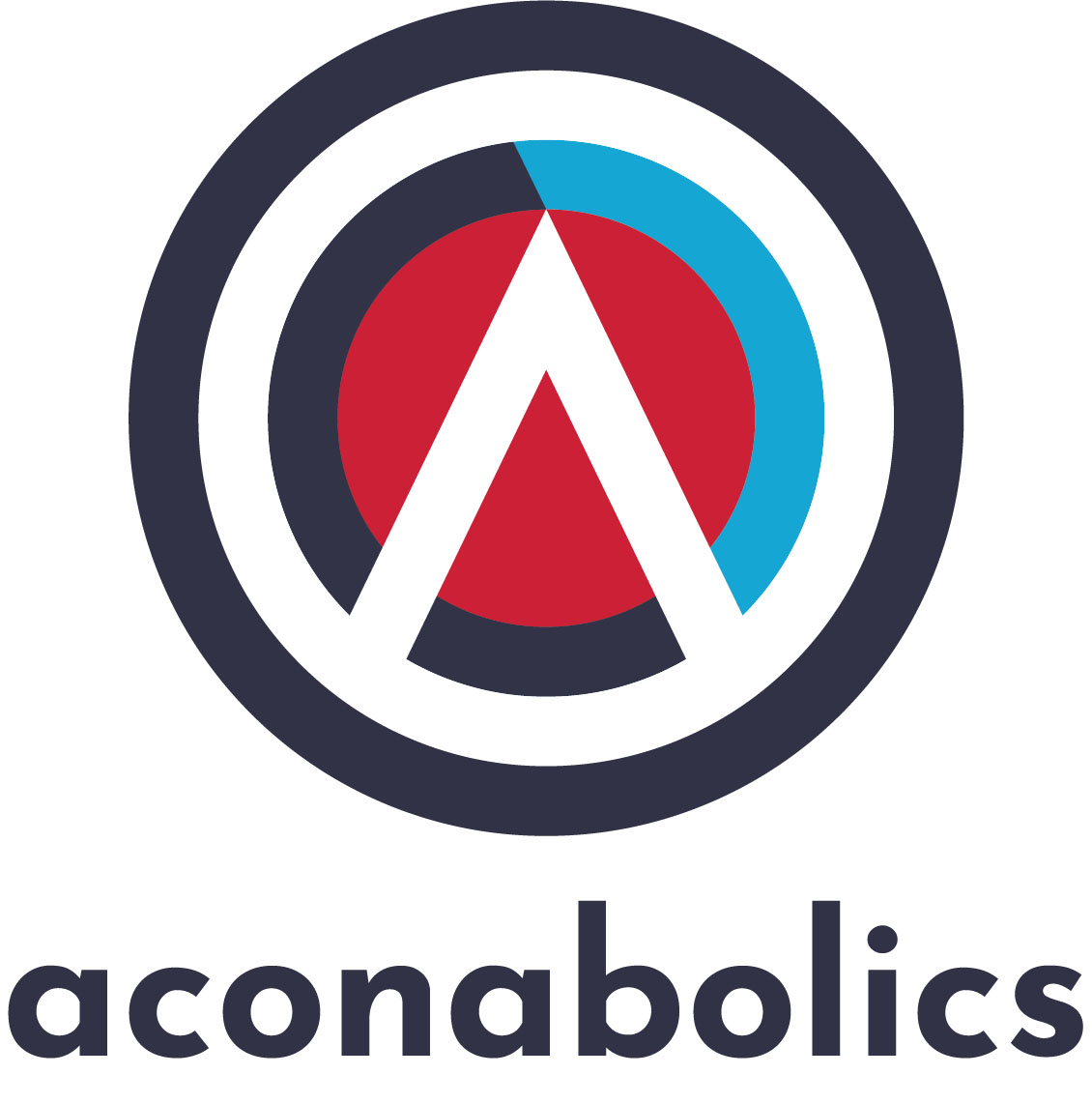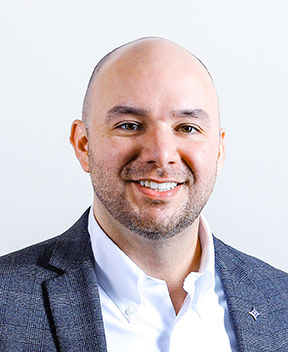Professor, student patent research breakthrough, start company on campus
Furman Professor of Chemistry Greg Springsteen and Trent Stubbs ’20 haven’t found the origin of life (yet). What they have found, however, has the potential to help save ones already here, which, as consolation prizes go, is pretty good.
In January, Springsteen and Stubbs filed two provisional patents for a chemical process that produces molecules critical to metabolic flux analysis, an emerging technology able to rapidly diagnose cancer and bacterial infections. Metabolic flux analysis relies on Carbon 13 (13C), an isotope of the element carbon, to create labels that help track the growth, metabolism and movement of cells, but existing methods for generating many of these labeled compounds rely on expensive and inefficient biological pathways.
The technique developed by Springsteen and Stubbs, however, can accomplish the same transformations synthetically in a chemistry flask. The resulting molecules are higher in purity and have the potential to lower the price of the diagnostic agents by an order of magnitude. The implications for research and health care are significant.
“Metabolic flux analysis helps us better understand how cells work,” Springsteen said. “(Researchers) can buy some of these labeled compounds now, but they are extraordinarily expensive, often approaching thousands of dollars for an amount less than a grain of sand. This technology enables us to make them much more efficiently.”
Their synthetic methodology replicates a fundamental biological pathway called the citric acid cycle, and its discovery was the by-product of Springsteen’s role as a theme leader for a joint National Science Foundation (NSF) and NASA research consortium called the Center for Chemical Evolution. Springsteen specializes in applying the principles of mechanistic organic chemistry to understanding life and its origins, and he and his students have been working for more than a decade trying to discover how inorganic chemical reactions billions of years ago could have turned into a self-sustaining network of metabolic reactions, which is a central criterion for life.
Over the last five years, Springsteen’s lab at Furman has trained 21 undergraduate researchers, published six research articles, and has been awarded grants totaling more than $1.2 million from the NSF and NASA. Stubbs, recognized as one of five Furman Fellows this academic year, joined the hunt in 2017 and proved particularly adept at working with the citric acid cycle — so much so that he and Springsteen succeeded in getting the cycle to run in a chemical flask all on its own.
“We were studying the origins of metabolism and how metabolism could have initiated from very small molecules that can be found on meteorites and were likely available on primordial earth. How do we go from those tiny building blocks to a functional metabolism?” Stubbs said. “We were able to boot up a part of modern biology from these very small building blocks.”
That was an accomplishment by itself, but eventually they realized there were more immediate impacts.
“Using our method, we have the flexibility of putting the tracer atom at different positions on the molecule. This enables researchers to learn how the molecule gets chewed up, metabolized, and broken down within a biological system,” Stubbs said. “We didn’t have the realization that this technology could advance other fields until much later down the road.”

The official logo of Aconabolics LLC, a Furman-based company launched by Professor of Chemistry Greg Springsteen and Trent Stubbs ’20.
Once they did realize it, however, they also realized the potential of significantly increasing access to these compounds. That led to the launch of Aconabolics LLC in July of 2018, a company Springsteen and Stubbs co-own in an unprecedented partnership with Furman.
Aconabolics produces the compounds in a specially constructed lab space on campus, using techniques from the patents that will be owned by Furman. Furman has also provided legal counsel to assist Springsteen and Stubbs with the complex and expensive patent-writing and filing process. The university will receive a percentage of future net sales of the compounds while Springsteen and Stubbs retain exclusive patent licensing rights.
Springsteen and Stubbs have also received assistance creating an effective pitch to present to potential investors from the Office for Innovation and Entrepreneurship.
“The biggest thing I love about their story is realizing The Furman Advantage in that they have a faculty member and a student doing the research, taking their research out of the lab, and impacting the world,” Anthony Herrera, executive director of the Office for Innovation and Entrepreneurship, said. “One of the first questions I asked Trent was, ‘What do you want to do? What is your goal?’ And he said, ‘I want to help save lives. The science we’re doing can have an impact on humans.’ The way you can do that is you have to commercialize it. Just writing about it is not going to get you anywhere.”
Explaining their breakthrough to people unfamiliar with the science was critical to that goal.
“The first time they shared it with me, I had to stop them and say, ‘Umm, I’m a business person. I’m not a chemist, so you have to reframe your whole pitch to me in a manner I can understand,’” Herrera said. “I had to help them tell their story to this audience … And let me tell you, they hit it out of the park. They were able to take what they have done in the lab and tell it in a story that resonated with an investor audience that earned them early funding.”
Herrera also helped develop financial reports showing Aconabolics had a viable business model, connected them to community expert mentors, and still serves as an adviser.

Office for Innovation and Entrepreneurship Executive Director Anthony Herrera.
“Neither Trent nor I come from an entrepreneurial background, so having these kinds of mentors has been crucial to us moving this along,” Springsteen said. “(Adjunct Business and Accounting Professor) Charles Davis listened to our pitch and helped us with our slides late into the evening on the night before our pitch to the South Carolina Research Authority. Talk about support across the campus – we’ve been getting it from absolutely everybody, and we wouldn’t be able to do this if Furman wasn’t hugely behind us.”
Stubbs, a native of Roswell, Georgia, showed Springsteen early in his Furman education that he was an exceptional student. On pace to graduate with a chemistry degree, Stubbs wanted to come to Furman after seeing the research opportunities his sister Haley Stubbs ’16 had while earning her chemistry degree.
“I love how much you can explore your creativity and curiosity through research. When you’re running experiments, you find a piece of information, which opens the next door,” Stubbs said. “There is still so much left to figure out, and even the things we already know we don’t fully understand yet.”
Springsteen said his work with Stubbs and other students shows meaningful research opportunities and results aren’t limited to graduate school.
“One of the things that makes undergraduate research fun is bringing bright, creative minds into science, where they can really make a fundamental difference to our understanding of chemistry and biology very early on in their careers. Undergraduates can do premier-level research, and they can do it extremely early,” Springsteen said. “(This) research has been a true collaboration … This is the first time I’ve worked on a project where the implications are a year out rather than on-the-horizon out. That part of it makes it a lot of fun, the idea of bringing our science to the world in a tangible way and not just to the academic community.”
Their patents would be the second and third ever owned by the university. The first is a patent awarded last week to Professor of Physics Bill Baker and Paige Ouzts ’93 for the invention of a device able to measure glucose levels by taking a specialized photo of the eye with sophisticated infrared sensors.